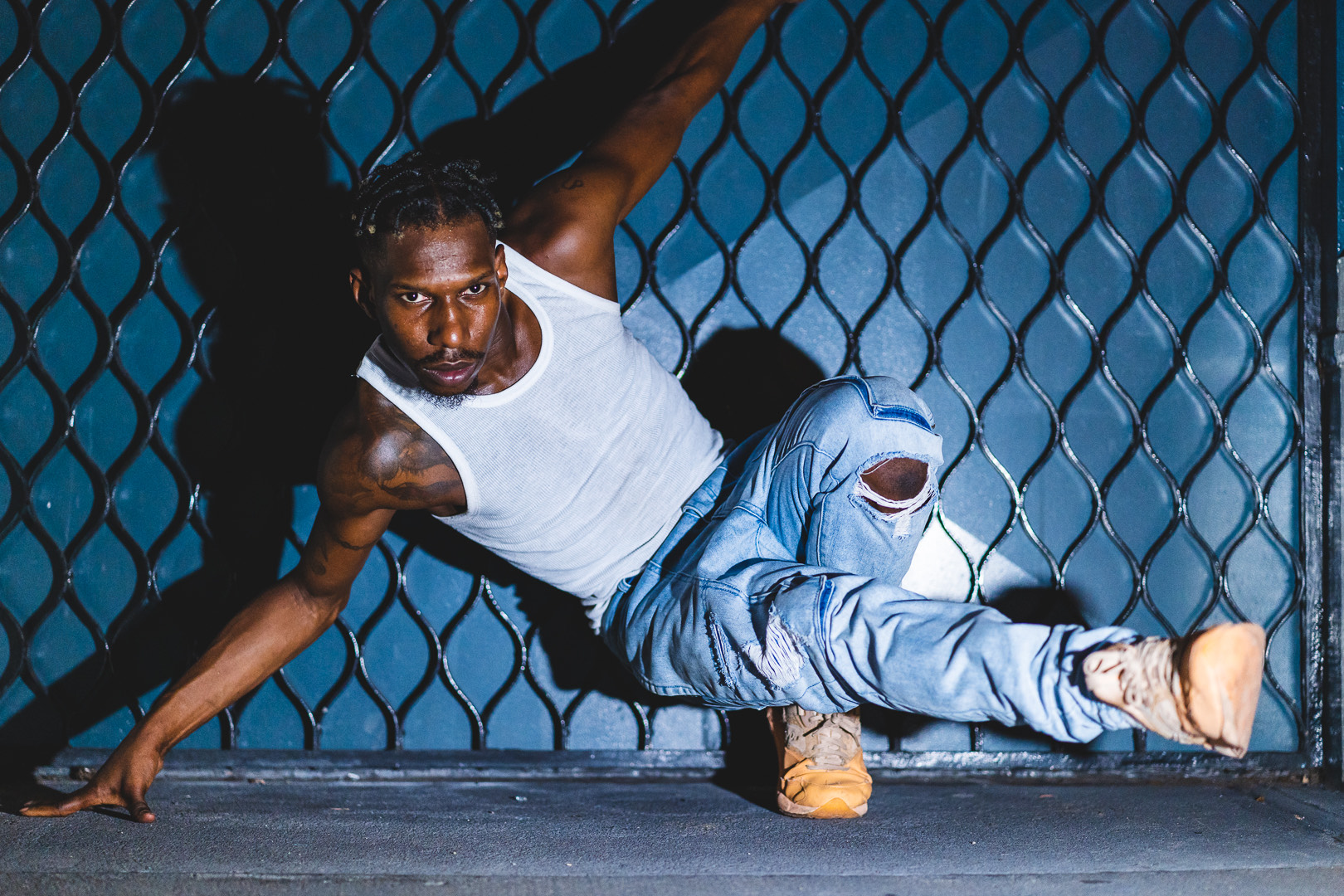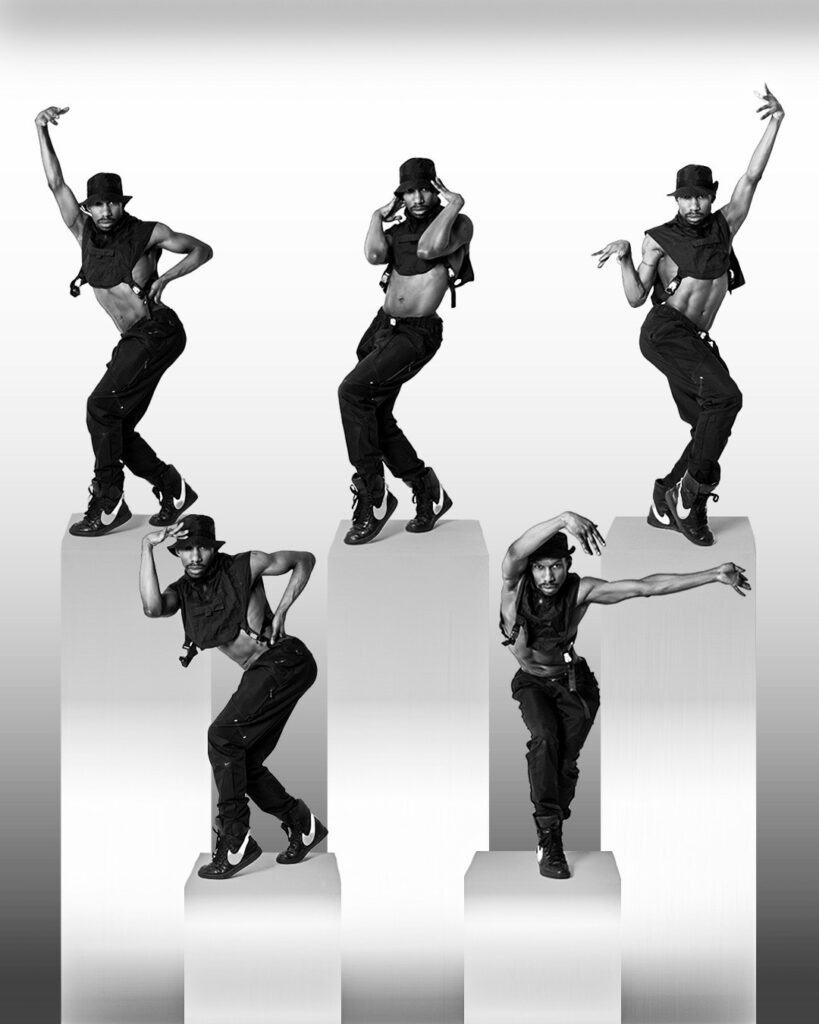
Omari Wiles’ movement quality is an exciting blend of seemingly conflicting genres. He began training in traditional West African dance at 8 years old with his mother, Marie Basse Wiles, and father, Anthony Olukose Wiles, at their Brooklyn-based dance company, Maimouna Keita. As he got older, he traveled between the U.S. and Africa often, and was introduced to urban-street styles from Ghana, Nigeria, South Africa, and the Congo. In his teens, Wiles entered the world of contemporary dance through classes with Ronald K. Brown and added house classes from Marjory Smarth at Peridance Center. In 2004, he started training in voguing. “I had studio training for some genres, but I got my street training from dance groups in urban communities and watching music videos,” he says. “My friends, nieces, and nephews would send me videos of the new steps that came out in Africa, and I started teaching myself from them.”
Wiles’ first professional performance opportunity was born from a teaching experience. He was substituting for his mom’s African class at Peridance when a director saw his work and asked him to consult on a John Legend music video called “Made to Love.” “I couldn’t believe it,” Wiles says. “I thought he was lying. But of course he wasn’t, and after that, things started really happening.”
Since then Wiles has worked with artists like Jennifer Hudson, Janet Jackson, and Beyoncé, and has danced with Ephrat Asherie Dance Company. In 2018, he started his own company, Les Ballet Afrik. The troupe is a multicultural dance company whose mission is to champion the Black, Latinx, and LGBTQ+ communities within the ballroom scene. The company’s movement is rooted in all of the styles Wiles has trained in—African, Afrobeat, house, vogue, and Latin dance. He’s named the combination of styles “Afrikfusion.”
Here, Wiles shares his thoughts on melding dance styles, his most influential dance teacher, and more.
On melding styles “African dance is high-energy, and because of that training it was difficult to learn how to contain it. Training in house allowed me to learn how to make things sharper and utilize textures and dynamics. Then voguing allowed me to feel more feminine and explore a softer texture to my movement. Particularly as a Black male, it was the opposite of what I’d grown up doing, and it was eye-opening. The three styles really work together in an unexpected way.”

On the most helpful dance lesson he’s ever learned “My African dance training taught me about musicality. There is so much to follow when you’re dancing to traditional African drums. That flow showed me how to transition from one step to the next and hear music differently when I started training in house, hip hop, and voguing.”
On his most influential teacher “Ron Brown came into my life at a time when I was searching for myself. I learned about movement from him, but he also taught me motivation and how to navigate the industry without losing myself. He constantly pushed me in the right direction. He himself fused Afro-Cuban with contemporary movement and created his own genre of dance, which made me think, If he can do this, it has to also be possible with the genres I want to explore. Of course, that led to me creating my company.”
His advice to educators in 2023 “Conversation is an important part of dance class. Everyone learns differently. Not everyone is a visual learner, and sometimes you have to elaborate with stories and explanations. I often see students get brief directions on what the step is, but not enough details on how to ground themselves into the floor, how to allow their knees to plié, how to get their lower back to release, and their spine to flow through the neck. Classes are an hour and a half, and many teachers are just hurrying to get their choreography out there, but there has to be time and space for conversation, motivation, and connection.”
On his dreams for the future “I reached a lot of my goals early on in my career, but in the future I’d like to continue choreographing and creating. I want more LGBTQ artists to see me and my work and know they have a place in this space. I also love teaching and want to expand in that world even more. I want to create music and dancing that empowers people.”





